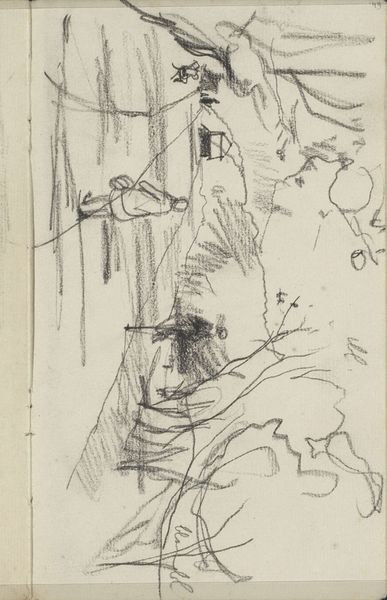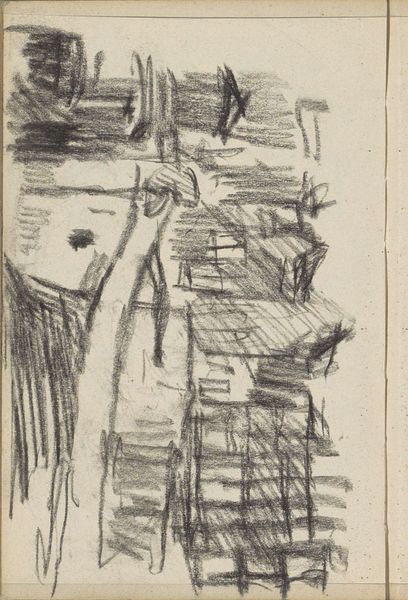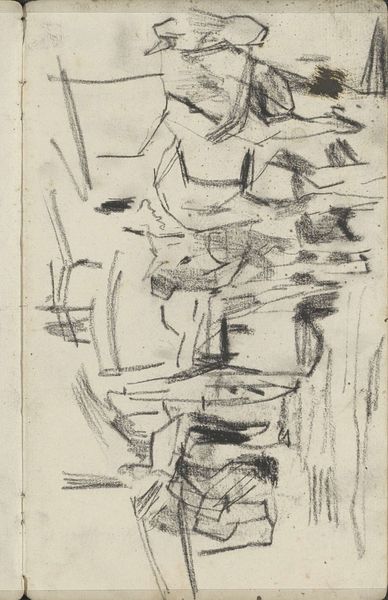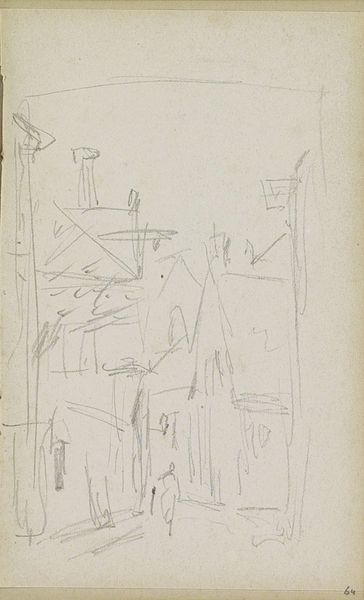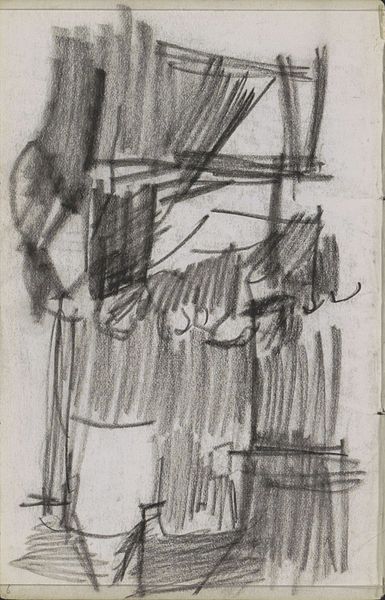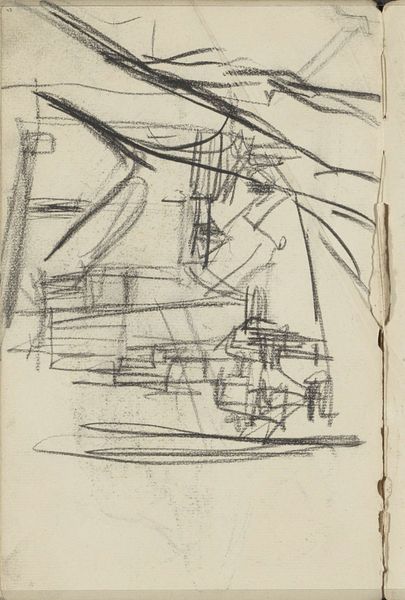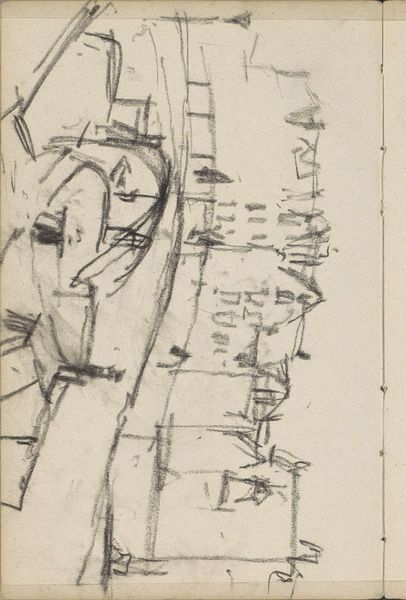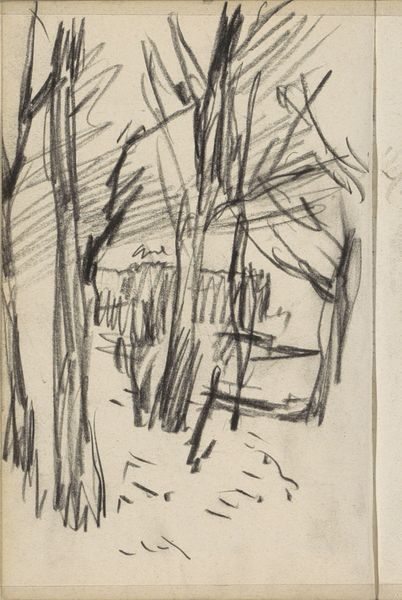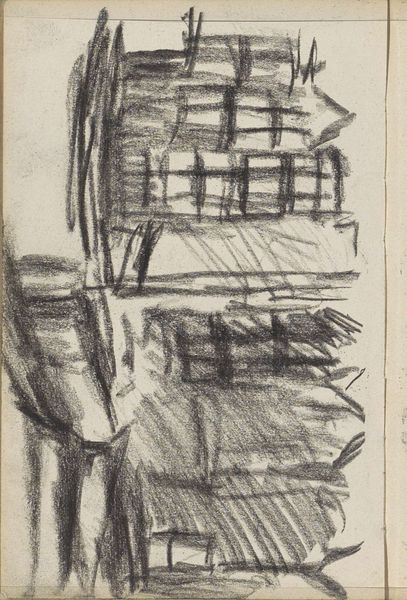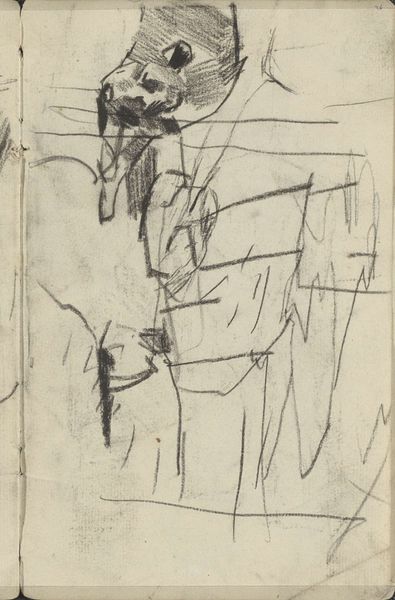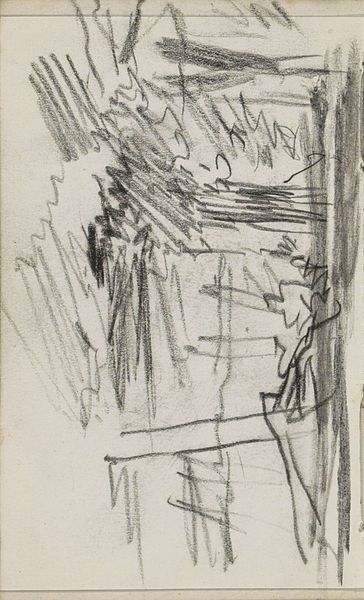
Gezicht op Prinseneiland te Amsterdam met de Sloterdijkbrug Possibly 1907 - 1911
0:00
0:00
georgehendrikbreitner
Rijksmuseum
Copyright: Rijks Museum: Open Domain
Editor: This is "Gezicht op Prinseneiland te Amsterdam met de Sloterdijkbrug" by George Hendrik Breitner, made possibly between 1907 and 1911, using graphite. The rough lines create a rather somber and industrial feel, and the bridge seems to dominate the landscape. What statements do you believe Breitner is trying to make about the urban experience of the time? Curator: It's a compelling question, and vital to understanding Breitner's place within the visual culture of the Netherlands. Considering his wider body of work, particularly his photography, how do you see his engagement with representing the rapid industrial and social changes occurring in Amsterdam? Did the development improve the conditions? For whom? Editor: I guess he is showcasing a part of Amsterdam’s expansion, and the impact on working class neighborhoods that have been there for centuries. It appears to almost emphasize their resilience, while perhaps the rapid progress is also something we should question in regard to quality of living. Curator: Exactly. Breitner was very interested in the everyday life of working-class people, as shown in several of his sketches, photos, and paintings of women, and it helps to view him as trying to elevate those traditionally left out of visual culture. Does this shift your perspective on his use of impressionistic styles or material use? Editor: That makes a lot of sense. Seeing it within that historical and cultural framework changes my understanding. It highlights that these quick, preliminary strokes might also suggest spontaneity but also make more accessible the urban struggles and strength that are occurring at that time. Curator: Precisely. The art historical, cultural contexts gives such potency to his sketching process, doesn't it? By linking these intimate views to the broader scope, one can start conversations about who defines aesthetics, progress, and social realities through what they depict. Editor: Definitely. I hadn't thought about it so directly. Thank you for tying in the sociopolitical context and Breitner’s possible intention!
Comments
No comments
Be the first to comment and join the conversation on the ultimate creative platform.
